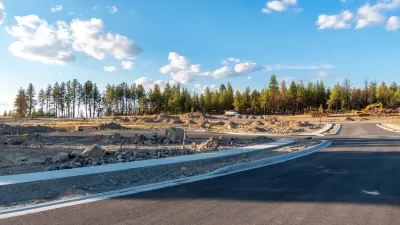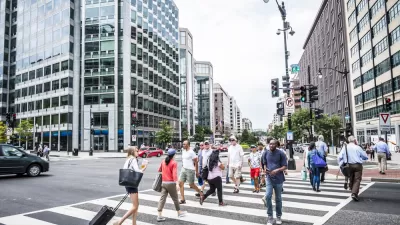Nate Berg offers his take on the replicas of Western subdivisions that have come to define social status in the burgeoning economies of the Middle and Far East.
It's often said that America's most important export is its culture, and in recent years, that's meant more than rock and roll and fast cars. Throughout the booming economies of the east (China is the prime culprit), planned communities are being manufactured wholesale, modeled after American suburbs and European towns.
Responding to demand for the trappings of a Western lifestyle (and the social status that comes with it), communities like Beverly Hills and Orange County are materializing halfway around the world from their namesakes.
These "imposturbs," which Berg calls "a little absurd," don't always meet with overwhelming success. Shanghai's "One City, Nine Towns" community, which features separate districts themed after "England, Spain, Sweden, the U.S., the Netherlands, Australia, Canada, Germany and Italy... haven't actually become 'towns,' as few people have moved in." Instead the development has become a destination for wedding photo backdrops and television commercials.
As Berg explains, "This style of imitation building is not new. In fact there's an early example right here in the U.S., the 1920s-era development of Coral Gables, Florida, where developer George Merrick and the American Building Corporation built six themed villages" modeled on European and Chinese architecture. Berg, however, takes a less sardonic view of the Coral Gables developments, since they "were designed meticulously by architects with firsthand experience in the places that inspired each village."
"To a certain degree, it's no different than all the various brand names that you might see for handbags or something," says author Thomas Campanella. "[Developers are] all trying to hit upon the Louis Vuitton of residential architecture. It's a brand consciousness. It's very consumer driven."
FULL STORY: The Curious Case of the 'Imposturbs'

Alabama: Trump Terminates Settlements for Black Communities Harmed By Raw Sewage
Trump deemed the landmark civil rights agreement “illegal DEI and environmental justice policy.”

Study: Maui’s Plan to Convert Vacation Rentals to Long-Term Housing Could Cause Nearly $1 Billion Economic Loss
The plan would reduce visitor accommodation by 25% resulting in 1,900 jobs lost.

Planetizen Federal Action Tracker
A weekly monitor of how Trump’s orders and actions are impacting planners and planning in America.

Wind Energy on the Rise Despite Federal Policy Reversal
The Trump administration is revoking federal support for renewable energy, but demand for new projects continues unabated.

Passengers Flock to Caltrain After Electrification
The new electric trains are running faster and more reliably, leading to strong ridership growth on the Bay Area rail system.

Texas Churches Rally Behind ‘Yes in God’s Back Yard’ Legislation
Religious leaders want the state to reduce zoning regulations to streamline leasing church-owned land to housing developers.
Urban Design for Planners 1: Software Tools
This six-course series explores essential urban design concepts using open source software and equips planners with the tools they need to participate fully in the urban design process.
Planning for Universal Design
Learn the tools for implementing Universal Design in planning regulations.
Caltrans
Smith Gee Studio
Institute for Housing and Urban Development Studies (IHS)
City of Grandview
Harvard GSD Executive Education
Toledo-Lucas County Plan Commissions
Salt Lake City
NYU Wagner Graduate School of Public Service





























